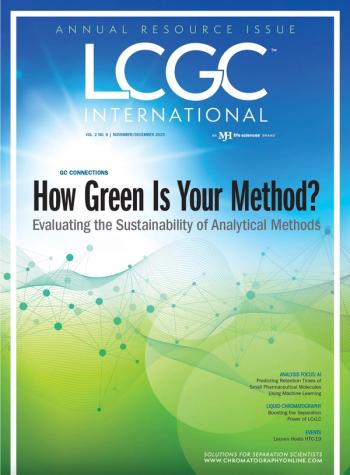
- The Column-05-09-2011
- Volume 7
- Issue 8
A mammoth task
Researchers have successfully extracted proteins from 600000 year old mammoth bones, using a technique that could be used to identify remains of very old extinct animals from tiny bones fragments.
Researchers have successfully extracted proteins from 600 000 year old mammoth bones, using a technique that could be used to identify remains of very old extinct animals from tiny bones fragments.
The West Runton Elephant is one of the most complete Steppe Mammoth skeletons in the world. Samples from the bones were used in a study by from the universities of York and Manchester into peptide sequencing mammoths and mastodons, published in Geochimica et Cosmochimica Acta.1
In the study, near-complete collagen sequences of mammoths, mastodons and elephants are proposed based upon available elephant genomic data and supported with LC–MALDI-MS–MS and LC–ESI-MS–MS analyses of collagen digest. Mammoth fossils were analysed to investigate the use of peptide mass spectrometry for fossil identification. Despite the age of the fossils, sufficient peptides were obtained to identify them as elephantid, and sufficient sequence variation was available to discriminate between elephantid and mammutid collagens.
Bio-archaeologist Professor Matthew Collins, from the University of York’s Department of Archaeology, said, “The time depth is absolutely remarkable. We believe protein lasts in a useful form ten times as long as DNA, which is normally only useful in discoveries of up to 100 000 years old in Northern Europe. The implications are that we can use collagen sequencing to look at very old extinct animals. It also means we can look through old sites and identify remains from tiny fragments of bone.”
1. M. Buckley, N. Larkin and M. Collins, Geochim. Cosmochim. Acta, 75(7), 2007–2016 (2011).
Articles in this issue
over 14 years ago
African drug testing trainingover 14 years ago
Looking for biomarkersover 14 years ago
Testing chromium in drinking waterover 14 years ago
Digital Productsover 14 years ago
The Importance of Ultrapure Water for Nano LC-MS Applicationsover 14 years ago
Market Profile: Volatile ExtractionNewsletter
Join the global community of analytical scientists who trust LCGC for insights on the latest techniques, trends, and expert solutions in chromatography.



